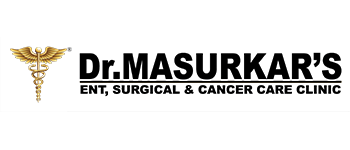Breast cancer is the most common cancer among women across the world. In industrialized nations, it is the second-largest cause of cancer mortality after lung cancer. Every year, 1.67 million new cases are discovered. It is the most common cause of cancer death in less developed parts of the world. Breast cancer is more common as people become older, but no one is immune. However, it is relatively uncommon before puberty.
Breast cancer detection and screening:
Starting at the age of 40, regular mammography and ultrasound screening will aid in the early detection of the disease, increasing the chances of cure.
Symptoms of breast cancer:
The discovery of a lump in the breast is the most common symptom. It is normally painless, however, it can occasionally be painful. Watery or bloody nipple discharge is another sign. A lump in the armpit may also be present in certain persons.
Diagnosis of breast cancer
It is critical to get medical advice to ascertain if the tumour is cancerous or not. Although the majority of breast lumps are benign, it is critical not to overlook those that are cancerous. A triple evaluation, consisting of a clinical examination of the mass, imaging with ultrasound and mammography, and a needle biopsy of the lump, is performed for this. Most of the time, this will provide the diagnosis. There may be a discrepancy between imaging and biopsy findings on rare occasions, or the biopsy may be inconclusive. In such circumstances, the lump must be surgically removed in order to determine the diagnosis.
After a cancer diagnosis has been made, the next step is to evaluate the disease’s stage, or whether cancer has spread to other organs. Certain blood tests, an abdominal ultrasound, a chest X-ray, and a bone scan are performed for this. A PET-CT scan is used to assess the stage in some patients.
Breast cancer types
Breast cancer isn’t a singular disease. It is divided into various subtypes. IHC (Immunohistochemistry) studies on the needle biopsy samples are used to diagnose the forms of breast cancer.
They are classified as follows:
- Breast cancers that are triple-negative
- HER2 augmentation
- ER/PR (Emergency Room/Press Room) (Estrogen and progesterone receptor) positive
- Negative for ER/PR
Treatment for breast cancer
Treatment for breast cancer is determined by a number of criteria, including the stage of the disease, the patient’s age, medical co-morbidities, and the patient’s preference to keep the breast.
- Breast cancer surgery – In the early stages of breast cancer, surgery is the initial treatment option. The main tumour in the breast, as well as lymph nodes in the axilla, is removed during surgery. There are two types of surgery in general. One procedure is removing the entire breast. The second step is removing the tumour with appropriate margins. Depending on the patient’s preferences, breast reconstruction might be done at the same time or at a later date. Axillary dissection or sentinel node biopsy is two options for axillary surgery.
- Breast cancer sentinel node biopsy – A dye is injected around the areola and tracked with a probe to the axilla in a sentinel node biopsy for breast cancer. With the use of special equipment, the first node to which the dye reaches is identified. This node is referred to as the sentinel node because it is the first node to which cancer cells spread from the breast tumour. The node in question is removed and sent for a frozen section biopsy. A full axillary dissection can be avoided if no cancer cells are found in the sentinel node. Chronic shoulder discomfort decreased range of shoulder motion, and lymphedema (swelling) of the upper limb will all be avoided as a result of axillary dissection. Drains are implanted after surgery and remain in place for a week to ten days. In most cases, patients are discharged within one to two days.
- Chemotherapy for breast cancer – In certain cases, when the tumour is large and the patient wants to keep her breast, chemotherapy is given first to reduce the tumour and allow breast conservation. Chemotherapy is given initially in stage 3 breast cancer, especially when the lady is young or the hormone receptor status is negative. A multidisciplinary team of surgeons, medical oncologists, and radiation oncologists plan the exact therapy.
- Breast cancer adjuvant treatment – Chemotherapy, endocrine therapy, radiation, and targeted therapy are all examples of adjuvant therapy for breast cancer, which treatment is given after surgery.
- Treatment for advanced breast cancer – treatment for stage IV disease – Treatment for stage IV breast cancer aims to relieve symptoms, extend life, and enhance the quality of life. Treatment options are determined by the severity of the disease, the presence of hormone receptors, and the presence of symptoms. Chemotherapy is given to hormone receptor-negative individuals. Endocrine therapy is the first line of treatment for ER/PR positive tumours, with chemotherapy reserved for the second and third lines. Targeted therapy with monoclonal antibodies, such as trastuzumab, is an important aspect of the treatment strategy for Her2 positive tumours. In certain cases, radiation is used to help manage discomfort and reduce tumour burden. Patients with stage IV cancer can live a long time if they get a mix of treatments.





